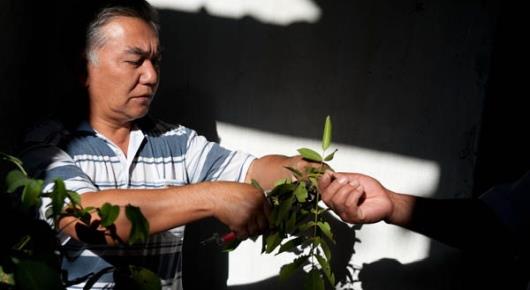Kyrgyzstan advances forest monitoring in support of the Sustainable Development Goals

Meeting for the second time, Kyrgyz stakeholders gathered this week in Bishkek to advance the country’s national criteria and indicator set for sustainable forest monitoring.
The exercise, carried out under a joint project of the United Nations Economic Commission for Europe (UNECE) and FAO, is especially important today; Kyrgyzstan is currently in the process of adapting a national development strategy that also addresses environmental safety, climate change adaption, ecological sustainability and forests.
To gauge progress towards climate goals, a forest monitoring system is essential. But before the UNECE/FAO project was launched in 2016, only a couple of specialists and researchers were developing criteria and indicators for sustainable forest management in Kyrgyzstan. Today, the picture is much different. The Kyrgyz State Agency on Environment Protection and Forestry has been working diligently in the past year to develop the draft criteria and indicators that were discussed this week. A first workshop was held in March 2017, also in Bishkek.
A national set of indicators is a modern forest policy tool that stimulates communication within and outside of the forest sector.
“An active and participatory process is vital for success, as consultation, consensus-forming and the inclusion of stakeholders brings quality and, above all, ownership,” said Christopher Prins, an international expert on forests and forest monitoring systems.
While boosting Kyrgyzstan’s national forest policy, the project also is stimulating the country’s participation in such international forest-related processes as the 2030 Agenda for Sustainable Development, the United Nations Strategic Plan for Forests, and the Global Forest Resource Assessment.
Kyrgyzstan is a country with little forest cover. Nonetheless, its forests are of great socio-economic value to the population, providing firewood for heating and cooking and supplying people with fruits and nuts, which can be a source of income. Kyrgyzstan is home to the world’s largest wild-growing nut forests, and it also boasts Juniper, conifer and riparian (Tugai) forests.
However, Kyrgyzstan’s forests are under pressure, mainly due to heavy overgrazing, desertification and logging of trees for firewood.
In addition to their work with Kyrgyzstan as part of this “Accountability Systems for Sustainable Forest Management in the Caucasus and Central Asia” project, UNECE and FAO are supporting Armenia, Georgia, Kazakhstan and Uzbekistan in developing their own national criteria and indicator sets.
3May 2018, Bishkek, Kyrgyztan
